I guess I could suggest a solution to the "at least" part of the question. You can find the corners of the cube by finding the lines in the image.
Firstly, find the edges in the image. If the target images are as plain and clear as the provided one, finding edges must be straighforward. Use cv::Canny().
cv::Mat img = cv::imread("cube.png");
cv::Mat edges;
cv::Canny(img, edges, 20, 60);

Secondly, in the edges image, detect the straight lines. Use either cv::HoughLines() or cv::HoughLinesP(). Here, I proceed with the former one:
std::vector<cv::Vec2f> lines;
cv::HoughLines(edges, lines, 0.6, CV_PI / 120, 50);
Plaese refer to the on the OpenCV documentation on Hough lines. I also took the code for the visualization from there.

The cv::HoughLines() function detects straight lines and, for each line, returns 2 values (ρ - distance, and θ - rotation angle) which define this line's equation in polar coordinates. This function would often return several lines for one source edge (as it did for a couple of lines here). In our case, we can remove such duplicates by filtering lines with the very close ρ values.
The benefit of our case is that the sides of the cube resposible for each dimension (length, width, and height) will have the same rotation angle θ in found line equations. For instance, we can expect vertical sides of the cube (responsible for the height dimension) to remain vertical and have their θ close to 0 or π (see the OpenCV documentation). We could find such lines in the vector of the detected Hough lines:
std::vector<cv::Vec2f> vertical_lines;
std::copy_if(lines.begin(), lines.end(), std::back_inserter(vertical_lines), [](cv::Vec2f line) {
//copy if θ is near 0 or CV_PI
return ((0 < line[1]) && (line[1] < 0 + CV_PI / 10)) ||
((line[1] < CV_PI) && (line[1] > CV_PI - CV_PI / 10));
});

The same reasoning applies to finding the lines for the rest of the cube sides. Just filter the found Hough lines by appropriate θ.
Now that we have the equations of the lines of our interest, we can find their corresponding edge pixels (not optimal code below, just demo):
std::vector<cv::Point> non_zero_points;
cv::findNonZero(edges, non_zero_points);
std::vector<std::vector<cv::Point>> corresponding_points(vertical_lines.size());
for (int i = 0; i < vertical_lines.size(); ++i)
for (auto point : non_zero_points)
if (abs(cos(vertical_lines[i][1])*point.x + sin(vertical_lines[i][1])*point.y - vertical_lines[i][0]) < 2)
corresponding_points[i].push_back(point);

Now, for each found cluster find the top-most, the bottom-most points (or left-most/right-most for the other sides) and get your cube corners.
Please note the pixel I denoted by exclamation marks. It got accidently sorted to one of the vertical Hough lines, but it actually belongs to a non-vertical top side. It needs to be removed, by some outlier detection or by some other approach to the corresponding pixel search.
About retreiving actual lengths of the sides: to my knowledge, it is really a non-trivial problem. Maybe this SO question would be a good place to start.




